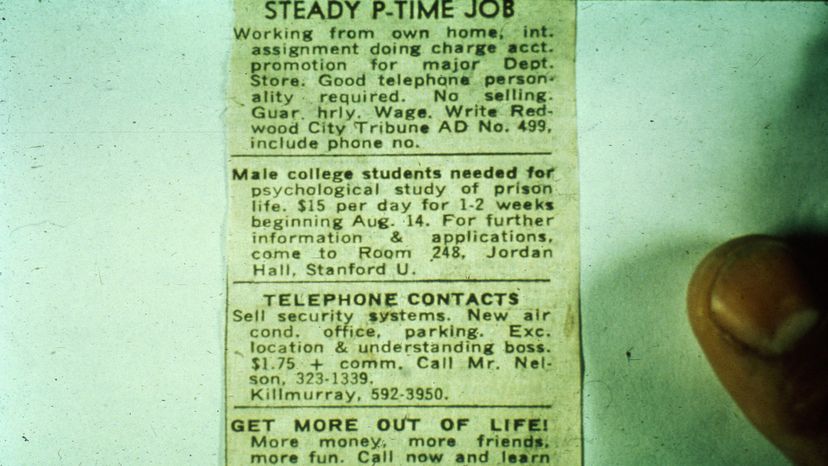Not-so-average Prison

Zimbardo sought to eliminate as many variables as possible in his mock prison. To do so, he had the more than 75 men who answered the newspaper ad take psychological tests so he could use "a homogenous, 'normal' sample" [source: Haney et al]. All but one of the participants were white, and they were all middle-class.
But the experiment introduced bias right from the start. For one thing, the newspaper ad explicitly mentioned that it was a prison experiment, which suggests that anyone who responded had pre-existing attitudes, either positive or negative, about prisons. In fact, a 2007 study found that people who responded to an ad about a prison experiment had higher levels of aggressiveness, authoritarianism, Machiavellianism, narcissism and social dominance than people who responded to an ad that did not mention prison [source: Carnahan]. Zimbardo reported that all the participants expressed a preference for being a prisoner rather than a guard prior to the experiment (although no guards left the study), and one of the prisoners was even a left-wing activist who suspected the experiment was a government attempt to find ways to control protesters [sources: Sedacca, Stanford Prison Experiment].
Advertisement
The participants also knew they were being watched, which could have encouraged them to be more performative in their roles. And the experiment involved mostly young white men to help control against race or age issues affecting behavior, so it studied a very specific subset of the American population. This kind of selection bias doesn't invalidate psychological studies, but it's vital to realize they're present when interpreting experimental results.
In trying to create an ideal simulated prison, Zimbardo accelerated some of the processes that happen to guards and prisoners in real prisons over time: deindividuation and dehumanization. The guards were given military-style uniforms, batons and mirror glasses modeled on those worn by TV and movie cops. These uniforms gave them a sense of power and authority, but also anonymity and a sense that they were part of a unified group of guards. The prisoners wore sandals, chains on their feet and smocks with no underwear, which Zimbardo did to emasculate and humiliate them [source: Haney et al]. They were also assigned numbers, and were only allowed to refer to themselves and each other by these numbers, not their real names. They even wore stocking caps to simulate having their heads shaved.
Finally, Zimbardo and his fellow researchers (plus a consultant who'd served 17 years as a prisoner) rarely intervened in the guards' actions, particularly early in the experiment. Rather than seeing this lack of oversight as the action of a neutral party, the guards likely saw Zimbardo and his team as authority figures who, by not intervening, tacitly approved of the guards' behavior [source: Zimbardo et al.].
Now let's look at what Zimbardo learned from his experiment.